Every person has a different skin color and different pigmentation cells that make up the unique blend of tones of the epidermis throughout the entire body.
Normally each skin has an equal set of tones that are even from the head to the toes unless there has been a certain imbalance of pigments like the melanin which can result in discoloration in certain spots on the body.
These imbalances can be external and internal like age spots, freckles, and hyperpigmentation, for which we’ll talk about below and of the possible store-bought and homemade solutions to them.
Namely, a radiant skin with a healthy glow to it means that you are taking a good care of your skin with a thorough skincare routine that covers all the important parts of the face like the T-zone, the cheeks, the forehead, and of course, the body as well.
The first thing you should begin with when going through your skincare routine is to even out your skin tone, smoothen out your rough parts of the skin and lessen your dark spots that may be caused by sun damage, age or scarrings.
This being said, read further on to discover what are skin brighteners, which skin care routine is the right one for you, how to pick the best bleaching products and which category your skin belongs in.
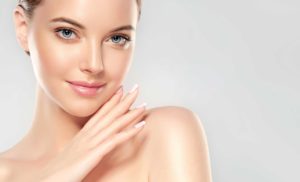
One of the most often skin changes we notice throughout the year is the change due to sun exposure. You expose your bare skin to the sun, and you get a darker tan that goes away within weeks when you reduce your direct exposure to the sun.
So by this, we know that certain changes in color fade away on their own, but there are some skin discolorations that are there to stay for a lifetime.
Skin discolorations like liver and age spots, freckles and scarrings must be treated with skin bleachers if you want them to go away permanently.
Skin lightening is vastly used as a cosmetic treatment in order to reduce and decrease the prominence of skin discolorations and changes of colors, and also to even out the skin tone permanently.
There are salons and professionals that do this, but also there are OTC creams (over the counter) that you can buy on your own and use them at home.
The skin bleaching treatment can be done on your face only, on certain spots of the face, or on your body, either the entire skin or certain areas that have been discolored in order to even out the changes of skin tone.
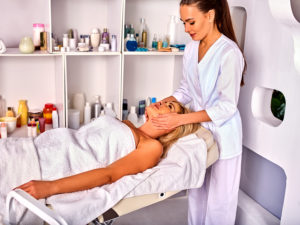 Skin Lightening Methods
Skin Lightening MethodsFrom creams to professional methods, chemical peels, plastic surgery procedures, to laser and other operative methods, skin lightening is not something unknown nowadays,
However, it is highly recommended that before you do anything on your own, you talk with a local board of certified and well-experienced skin care experts. Consult with them, tell them your expectations and wishes, and when they diagnose you, weigh your options and choose what’s right for you.
Below you will find information on all the skin whitening agents that can be found in the bleaching products, for the pre-melanin synthesis as well as for the during-melanin synthesis of the skin.
Tretinoin: This substance is also known as all-trans retinoic acid and in most recent researches has been found as effective in treating skin discolorations.
However, not as effective as some other chemicals because when you use tretinoin you need to avoid sunlight for the reason that your skin can tan and it makes your skin very sensitive when it comes in contact with UVA and UVB rays.
Hydroquinone: The one most effective and true skin bleaching agent is the hydroquinone. You cannot get it over the counter at any pharmacy, but it can be prescribed to you by your doctor or dermatologist and it will be compounded by a special pharmacy for you. It is a primary topical substance that inhibits the production of melanin that comes in 2% and 4% mixed with a combination of tretinoin 0.05% to 0.1% depending on your needs.
Usually, the 2% hydroquinone is found in cosmetics and the larger quantities of it will be made in the pharmacy if your physician prescribes. You can treat small spots and areas on your skin that are discolored or uneven, but you definitely cannot apply hydroquinone to your full body all at once, firstly because it’s toxic in such great amounts, and secondly because some places can lighten more than other places so different strengths of the cream can be used.
Hydroquinone prevents the development of melasma which is enhanced by sun exposure or your hormones which means that it prevents dark skin from making its own substances that make it go darker in the first place. This is why it is said that hydroquinone doesn’t bleach your skin but only lightens it, preventing melanin hyperpigmentation.
Hydroquinone alternatives: In case you consider hydroquinone to be risky and damaging to use, there are alternative lighteners which are derived from natural sources of hydroquinone found in nature. These include:
All these natural sources of hydroquinone contain arbutin which inhibits again the production of melanin and is known as lightener and not bleacher, however, the pure forms of arbutin are proven to be more effective and potent for the evening out the skin tone.
Arbutin: This substance is isolated from the leaves of certain plants and fruits like mulberry, blueberry shrubs, cranberry, pears or bearberry. As we previously mentioned, it has melanin-inhibiting properties and it is considered a safe alternative to depigment and make the skin whiter and fairer. Note that arbutin comes in two forms of isomers, the alpha and beta isomers. When you are buying products that contain arbutin, look for the alpha isomer, because it is more stable and effective than the beta, thus it is the more preferred one when it comes to skin lightening products.
Kojic acid: The Kojic acid comes in the process of fermentation of malting rice as a by-product, when producing the sake – Japanese rice wine. This acid also inhibits the melanin production, but it is probably the one of the less effective because it is unstable. When exposed to air or sun, it turns brown in most cases and loses its efficacy. There is also the kojic dipalmitate, but they are also not so effective so are used only in the form of antioxidant for the skin. It is noteworthy to mention that in certain studies kojic acid was found to be carcinogenic or in the best case scenario it causes severe allergies and /or skin irritations.
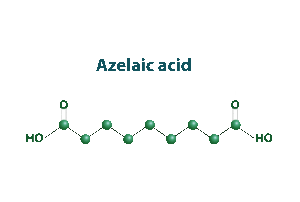
Azelaic acid: Azelaic acid is discovered recently as a component of rye, barley, and wheat. It is mostly used as a formulation of cream at 10-20% concentration.
As a less effective bleaching agent, azelaic acid is used to treat skin discolorations due to acne, scarrings and other mild forms of uneven skin tones with its melanin-inhibiting properties.
Glutathione: As a tripeptide molecule, glutathione can be found in mammalian bodies. It’s a very potent antioxidant that prevents aging and discoloration of the skin. Probably after hydroquinone, this is the most vastly used substance because it supports the natural bodily processes of skin whitening and evening out the skin tone.
Is also serves as a UV protector, and protects the skin from UV radiation because it has large quantities of antioxidative properties. Is many studies, it was found that glutathione is great when it comes to reducing dark spots when taken in doses of 500 mg per day (250 mg twice a day) for a month.
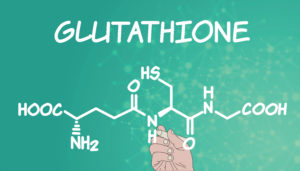
This chemical is available in many cosmetics products like lotions, creams, soap, nasal sprays and even in injectable form.
The most effective use of glutathione is found to be in its injectable form because the pills and the creams and lotions are slowed down by the cells of the body.
In order to increase its effectiveness, it is recommended to be taken with vitamin C and E in order to increase the absorption of Glutathione.
Note that you mustn’t take Glutathione together with other skin whitening agents like hydroquinone. This might have a carcinogenic effect and cause irreversible depigmentation.
Vitamin C: This vitamin is essential to many parts of the human health. Namely, it is vital for many processes that occur daily and without it, there can be a lot of imbalances overall. With its antioxidative properties, vitamin C helps skin discolorations to even out, and for scarrings to simultaneously heal faster with the body’s natural abilities.
Alpha hydroxy acid: When it comes to skin peeling in order to remove discolorations, alpha hydroxy acid peels with more than 50% concentrations are the most used. However, the only qualified physician is able to prescribe and use these acids on your because if not treated carefully it can lead to serious skin damage. Research has shown that glycolic and lactic acids help to inhibit the melanin production and act as exfoliants of the skin.
Niacinamide: When compared to alpha hydroxy acid peels, niacinamide is proven to be much safer to be used topically for the whitening of the skin or genitalia. It has no adverse side-effects, and it is known to reduce acne, increase skin moisture and help to reduce small skin wrinkles.
Monobenzone creams: For people who suffer from vitiligo ( a skin condition that produces light and dark skin areas), creams with monobenzone as a compound are recommended to lessen the pigment which promotes skin discolorations. However, this compound may at times cause melanocytes destruction and permanent depigmentation, so in order to avoid this, it is advisable to use lower concentrations of monobenzone creams.
Tranexamic acid: This acid is either taken in a form of the lotion, cream or injected as a whitening treatment alone or together as an after treatment of laser therapy.
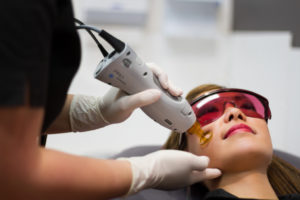 Laser treatments: Instead of using creams, pills, lotions, and injections, your doctor might advise you to undergo a laser treatment to even your skin out. This usually in the case of severe skin depigmentation. There are ablative and nonablative lasers that affect the melasma, but their results aren’t always reliable. At times they can cause hypo – or hyperpigmentation, especially in people with darker skin tones.
Laser treatments: Instead of using creams, pills, lotions, and injections, your doctor might advise you to undergo a laser treatment to even your skin out. This usually in the case of severe skin depigmentation. There are ablative and nonablative lasers that affect the melasma, but their results aren’t always reliable. At times they can cause hypo – or hyperpigmentation, especially in people with darker skin tones.
Cryosurgery: Cryosurgery is found to help with warts, skin tags, and skin discoloration in whitening the skin. It uses liquid nitrogen in order to destroy the skin cells that have excessive melanin pigmentation, so the cell can naturally regenerate itself, this time whiter without any dark pigments. While using cryosurgery, the excessive amounts of melanin come to the surface of the skin and peel off on their own in the period of 4-5 days after the treatment.
Since cryosurgery doesn’t leave a mark or a scar, it is a preferred method over laser, especially in the sensitive areas like genitals and face. Note that the efficacy of the cryosurgery depends on the depth of the pigment you have in your skin. The deeper it is the slower the process will be, and you will need more treatments.
Also, cryosurgery is recommended when it comes to treating freckles in any part of the body. And since they aren’t so deep in the skin, this is a very fast and effective treatment for them.
 Knowing your skin and what type it is, makes all the difference when it comes to skin products for care, for brightening and for the evening out your skin tone.
Knowing your skin and what type it is, makes all the difference when it comes to skin products for care, for brightening and for the evening out your skin tone.
It is also vital in knowing how to protect your skin from the external factors that make your skin unevenly colored in the first place.
According to numerous studies conducted on people’s skin types, it has been determined that there are 5 skin types in total that are very different when it comes to how they react to certain skin products and the quality of the skin in general.
So the most common skin types are:
Normal skin type: I guess no one has to tell you that having the last, normal, type of skin is the best one you can get because it reacts well with every weather condition, to every product and looks flawless at all times with little to no imperfections, without any visible pores, without severe sensitivity, and with a radiant complexion throughout the year.
Unfortunately, not everyone is lucky to have a skin that doesn’t suffer from any breakouts and is well-balanced, not too oily, and not too dry. This is why you need to read along and find your own skin type.
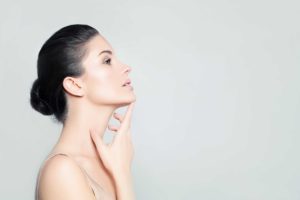
Dry skin type: If you feel that your skin has less elasticity, is dull with a rough complexion and there are lines forming visibly on it quite often, then you might have a type of skin that is dry.
You might be experiencing red patches all over your face, and it might get extremely difficult to clear the pores because in dry skins they are very small. When you expose your skin to cold weather it will crack, itch and peel, which will leave you with an irritated skin that you cannot use bleachers or skin lighteners onto.
This is why it’s extremely important to know if your skin is dry, so you can reverse the drying effects and use skin bleachers safely and avoid getting a scaly and inflamed skin.
Oily skin type: This is the most concerning skin type you could have, however, it can stand bleachers and skin lighteners the most because it has a certain oily moist to protect it against their drying properties.
However, this skin type is known to get worse in warm weather, humid air, and stress, when all three are causing it to break out badly and get more pimples. It can be also recognized by the shiny, thick complexion, enlarged pores and its array of blackheads and pimples all around.
Combined skin type: This type of skin is mostly mixed. If you have it, then you will notice the different feeling in different parts. Around the T-zone, it gets greasy mostly, while the upper forehead is normal and the cheeks are dry. This one is the hardest to keep up with because there are different zones you need to take care of with different products.
You will notice it through the dilated pores, the blackheads, the shiny complexion around the oily parts and the dull looks of the dry parts.
Sensitive skin type: The sensitive skin is also very complex one to take care of because it easily gets inflamed, red and irritated and is the hardest one to find the right products.
Especially when it comes to skin bleaching and lightening up skin tone – the triggers it reacts to differ for everyone, so you basically cannot take anyone’s advice, you just have to experiment yourself.
Also, you absolutely must find the mildest products for bleaching because you can harm your skin in the long run otherwise.
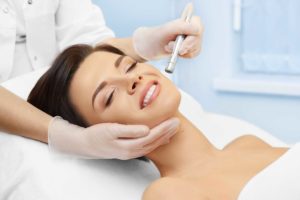
If in case you are a person who just wants a healthy, glowing skin with an even tone then this part of the guide might be more useful to you.
Namely, our hectic lifestyle makes it almost impossible for people to thrive in good health, with strong nails, shiny hair, and clear skin. The plethora of factors like harmful UV rays from the sun, poor diets, stress, and pollution damage the skin greatly, only enhancing the already imbalanced skin tone.
Other factors to be extremely cautious about are the different cosmetic products that contain substances from unreliable sources that additional damage instead of helping the skin.
So the best solution to these external factors are the natural, organic, homemade products that leave your skin nourished and glowing.
In addition, we have plenty of concoctions to prepare at home, with simple, natural ingredients that are easy to find, in order to prevent the appearance of blemishes and marks, to ensure photo-protection, eliminating harmful bacteria and balancing your skin tone.
So keep on reading to find out exactly how to use all these remedies.
First and foremost, it’s important to know that if you aren’t taking a proper care of your skin, there are no products that can help you reach an even tone. This is because the skin turns dull and pigmented mostly because of the dead cells that accumulate on the surface and damage it greatly. This is why exfoliating products and tools are essential when it comes to soft and smooth skin.
So once you cleanse it using scrubs and natural masks, you need to keep it hydrated for the new soft skin to remain nourished. Otherwise, it will again become rough and discolored.
Also, in parallel to using these skin whitening products, you need to make sure to use a good sunscreen to protect your skin from the UV rays, because vitamin D is best obtained from sun exposure so you shouldn’t hide from the sun entirely.
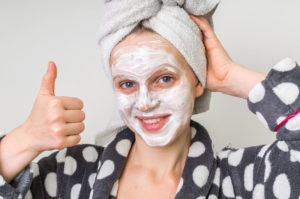
Here are some simple mixtures to brew up in your own kitchen and make wonders of your skin complexion.
Results are guaranteed, although it takes time because it’s all natural, and there are no adverse side-effects whatsoever.
Papaya-honey whitener:
Fresh papaya fruit is proven to have a myriad of health benefits, not only for the skin but for the entire body overall. With its papin and alpha hydroxy acids as active enzymes, papaya dissolves dead cells and removes impurities that make your skin dull and dark.
The honey has extremely potent antibacterial properties that help in reducing the number of dead cells and acne from the clogged pores. Make sure you do this every night with a clean skin.
It is recommended for people with oily to normal skin to use this skin whitening mask. Since papaya can cause allergies in some people, you need to make sure you aren’t allergic first, so you don’t complicate things even more.
Needed ingredients:
How to:
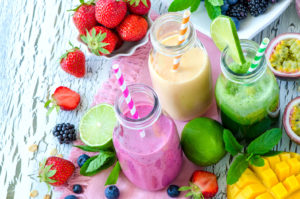 Yogurt-orange skin peels:
Yogurt-orange skin peels:
This is another inexpensive skin whitening mask that works very well due to its high vitamin C content that improves the elasticity of the skin and is a great depigmenting agent.
An addition to its effectiveness is the probiotic bacteria in the yogurt that is known to keep the skin healthy, glow and whitened.
This concoction is best suited for all skin types and can be used every other night.
Needed ingredients:
How to:
Oatmeal exfoliator:
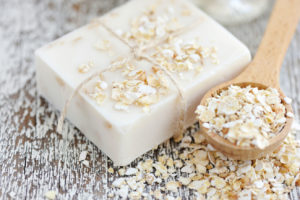
This mask holds ingredients that are perfect for those who want a smooth, whitened skin. The tomatoes contain the highest amount of lycopene there is in natural form and it is absolutely great for skin protection with its photo-protective properties.
It also prevents skin cancer, helps stop and reverses aging, it evens out age spots and other age-related skin problems. This is why they make your skin glow like no other product. The oatmeal helps exfoliate the dead skin cells after which your skin will be very smooth.
This mask can be used no more than 2 times per week, preferably before going to bed. It’s best suited for oily, combined and normal skin type.
Needed ingredients:
How to:
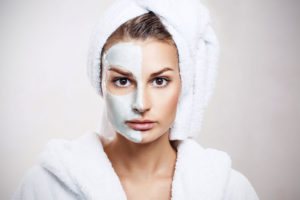 Milk whitening mask:
Milk whitening mask:
As we said before, vitamin C is the best antioxidant you can give to your body. It works wonders when it comes to skin whitening because it’s able to reduce the production of melanin which darkens the skin.
For best results, use this mask every other night until you even out your complexion entirely. It works well with every skin type.
Note: In case you feel some sensitivity on your skin after applying it, wash off immediately and rub an ice cube on the area.
Needed ingredients:
How to:
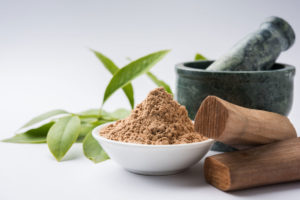 Sandalwood skin bleacher:
Sandalwood skin bleacher:
Sandalwood, either oil, powder, or any form of it, is known to inhibit and reduce the production of melanin by lowering the activity of tyrosinase. The rest of the ingredients provide your skin with the essential nutrients to make it nourished and lighter after only a few applications of it.
Note: Make sure you arent’ allergic to sandalwood and your skin can support it well. Do this by applying first on your neck or face, a small patch, just to see how it goes.
If your skin doesn’t get irritated, then use this mask twice a week for best results.
Needed ingredients:
How to:
Pumpkin brightener

In the season of pumpkins, use this antioxidant-packed powerhouse and make the best of it.
Besides consuming this delicious product for overall health, turn it into a delicious mask that will nourish and whiten your skin after just a few uses.
The high vitamin C and A and beta-carotene content make a great brightener to be used up to three times a week, no matter the skin type you have – it suits them all. In case you have a dairy allergy, swap the milk for aloe vera juice, rose water or almond milk.
Needed ingredients:
How to:
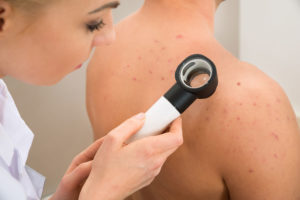
Now that you know where you stand, and what your skin is all about, we can talk about skin bleachers safely because you can now choose the most suitable one for you along with a good skin care to nurture the quality of your skin while using the skin lightener.
You see, skin lightening products or skin bleachers that even out your skin tone are also known as fading creams or whiteners because they reduce the dark pigment in your skin called melanin.
Namely, melanin is derived from tyrosine, the amino acid, and is a complex polymer – a pigment made by pigment-specialized cells that we call melanocytes.
However, the one that we all have under our skin goes by the name of pheomelanin more specifically.
Now, even though we all have it, it doesn’t mean it’s equally activated in all people.
For instance, people with darker complexions and black people have it activated from 50% to 100% and darker-white people like the Spaniards or the Italian have it around 50-60% activated in the sun. This complex polymer determines what kind of hair, skin and eye color a person will have, and how his or her skin will react when exposed to the sun.
People who have low pheomelanin levels get easily burned by the sun, can get sun allergies and are people who need skin bleachers the most to fade out certain external abnormalities on their skin. This can be everything from wanting to get a lighter skin tone and naturally brighter skin to acne scars and freckles, injury scarrings, discoloration related to hormones, age spots, and so on, whatever your case might be.
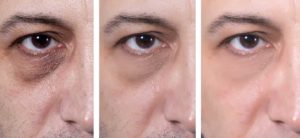
First and foremost, it is important for you to know that no matter which treatment you are using in order to whiten your skin and even out certain spots, nothing can be permanent without the proper care after.
This means that you shouldn’t expose your skin to the sun too much,
and you should always use a sunscreen of minimum SPF 30 with zinc oxide.
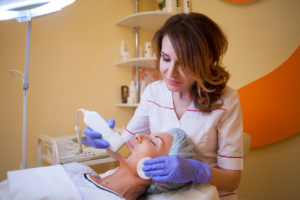
People who wish to lighten their entire complexion use these bleachers and skin lightening products on their entire body.
However this isn’t recommended, if not forbidden even, because there are active ingredients containing mercury and they can be absorbed through the skin leading to mercury poisoning which can cause severe kidney problems, neurological and psychiatric issues as well.
Pregnant women are advised to avoid products with mercury because they can pass these conditions and illnesses to their unborn child.
Also, to those using products with hydroquinone, doctors advise maximum precaution because there can be negative reactions when exposed to extremely high concentrations of compounds of glucocorticoids or mercury iodine.
These risks are mostly shown to people with darker to black skin tones.
Hydroquinone in large quantities is known to cause leukemia, so after a certain period of use, you must stop and take a break so the body can clean itself out of it. This is why the over the counter creams and pills contain no more than 2% hydroquinone.
In contrary, if combined with tretinoin in the amounts of 4%, it can be a serious cause for severe skin irritations.
Even though mercury is banned in the United States as a chemical not to be used in skin products, there are products that still use it which are outside of America. For example, it is found that almost 1 in every 3 skin lighteners made and sold worldwide contain certain amounts of mercury.
Here are some of the potential risks of skin lighteners:
 Precautions to take when bleaching your skin
Precautions to take when bleaching your skinYou should know that skin bleacher are dangerous and skin harming on a cellular level in general, so if your discolored spots of skin aren’t so visible and can be covered otherwise, you need to avoid these whitening agents.
However, if you still want to undergo a skin lightening treatment, then firstly you must consult with a dermatologist and ask for detailed instructions when using the product.
You also must make sure that there are no traces amount of mercury in the product which can also go by the name of mercurous, Mercurio, mercuric or calomel.
Another thing to be cautious of is the amount of hydroquinone in case you are using that whitening agent for your skin. Make sure it doesn’t exceed the amount of 2%, and if the label doesn’t say how much it’s better to ask the seller or not use it at all because in those cases it is definitely not safe to use it because labels can be misleading and misprinted.
Also, other than pills, creams, and lotions, your doctor might prescribe other treatment options less dangerous to your internal health like microdermabrasion, laser treatments, and chemical peels.
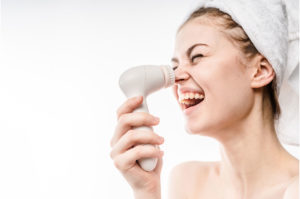
A nourished, glowing skin is a result of utmost care and a healthy skin routine.
Based on your needs, you need to pick what is right for you.
The results will always vary from skin to skin with the natural masks, but when it comes to the cosmetic products mentioned above, they almost always work in the way you want them to.
However, you need to consult with skin specialists like the experienced CoLaz team in order to choose what your skin needs.